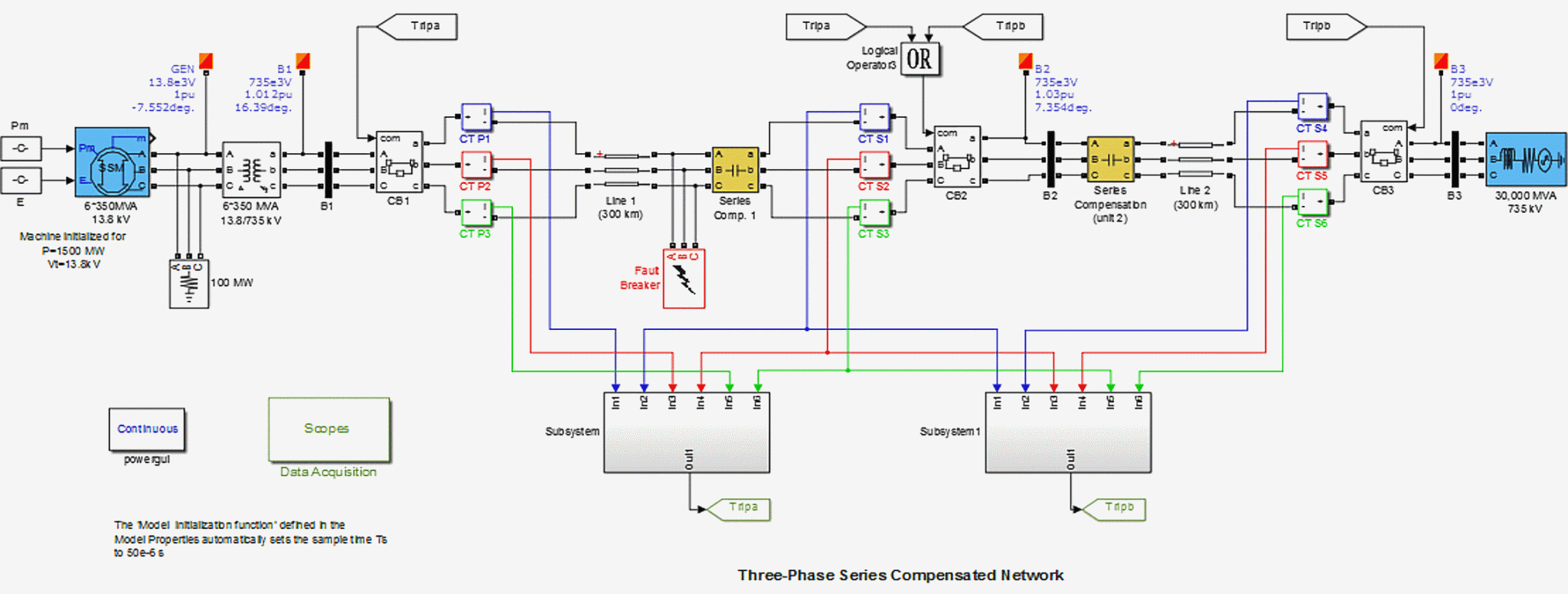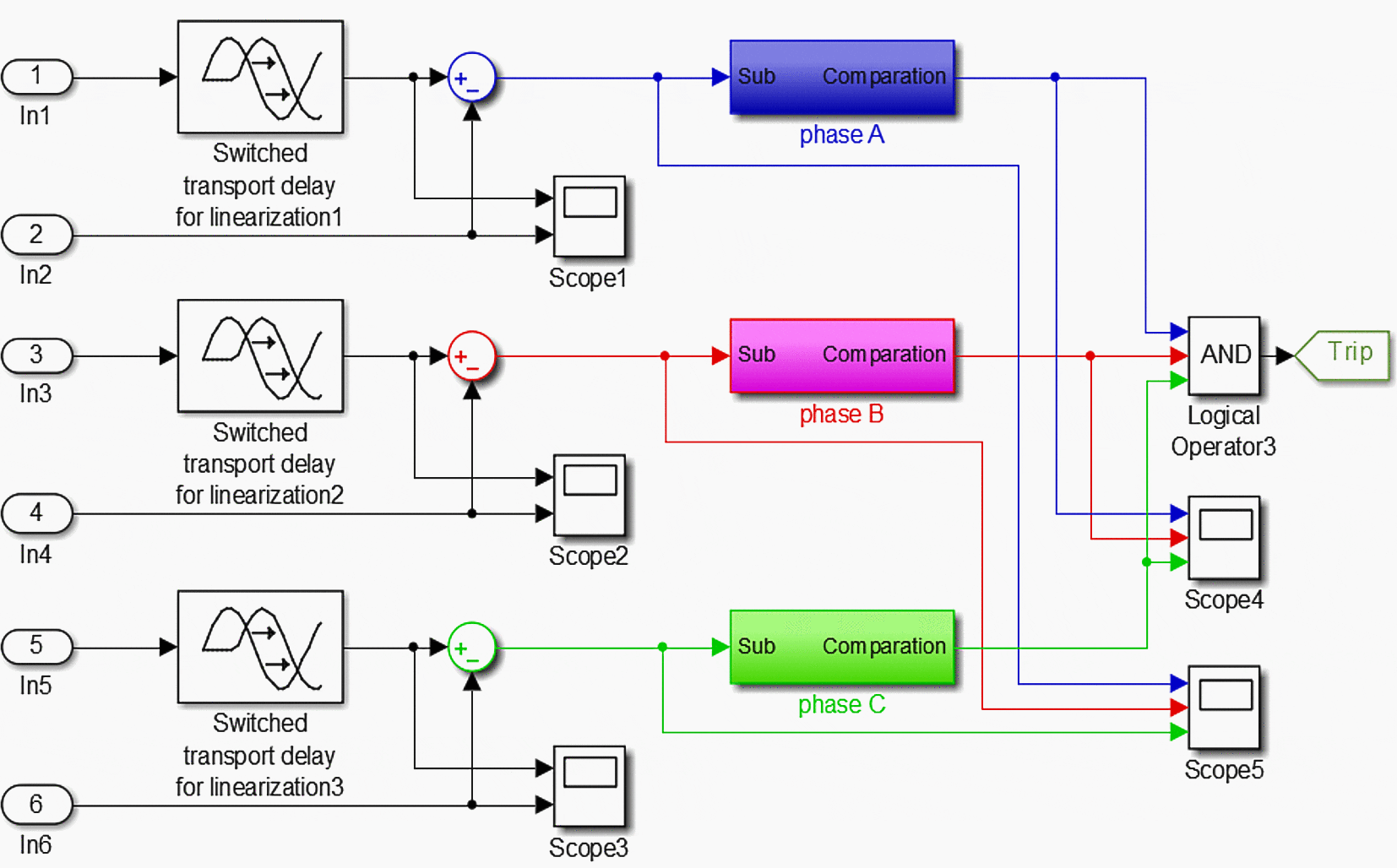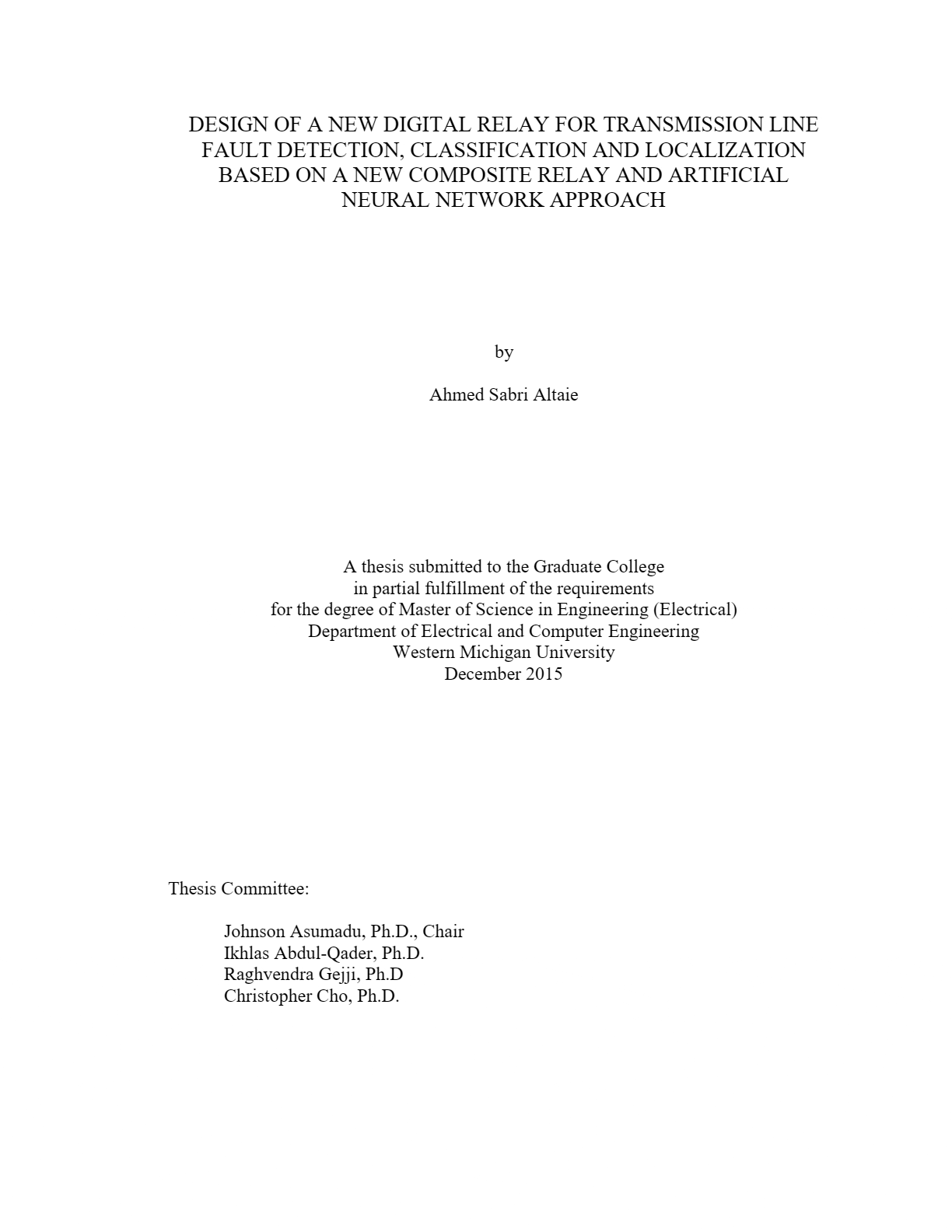Fault detection, classification & localization
Electrical Power System (EPS) is divided into several parts and each part classified as a system. Transmission line considered one of the main parts of the EPS networks. However, Overhead Transmission line is more prone to the fault than the other parts, because it is long and out of the room.

Hence, there are two types of fault normal and abnormal faults, the normal caused by the external influences while, the reasons of the abnormal faults come from the internal influences due to the flow design. Therefore, this research will introduce three major tasks as a fault detection, classification and localization.
Design of the fast, accurate and reliable protection relay to detect, classify and localize the fault is the first goal of all research, articles and proposals for the faults in the high voltage transmission line.
Many research were presented for the fault, classification and localization and many of them used to adopt the conventional protection method throughout the new technique.
So, one disadvantages may cause a big problem. Furthermore, one of the major problem on the protection system is the time from the detecting till the clearing fault on transmission line. While many proposals did not mention it on their research. Also, many of these research did not applied on system with a compensating or any additional components.
For the Artificial Neural Network (ANN) it is very popular algorithm for the fault classification on the HV transmission line, and the reason due to the capability of this algorithm to learn and recognize the pattern and the behavior of the system under any circumstances with high efficiency. Therefore, it has earned much interest by the researcher.

While, using of the classical methods with new technique will give new analytic for the situations, but no longer included all of the transient time analysis in a very short time. Also, the conventional approach detects and classifies the fault depending on the fundamental component of each signal might not achieve the desire analysis.
Hence, many researches did not addressed the series faults or not proposed a general ANN system, but divided the system into few parts each one for similar fault type different phase.
Therefore, in this research the New Composite technique has been adopted and tested to detect the fault on transmission line with a very short time and no one use it earlier.
On the other hand, using of the feed forward Neural Network was built to classify and localize the fault on transmission line. This system was strongly classify all types of fault whether it is series like (one line open and two line open) or even shunt fault like (Single Line to ground SLG, Double line DL, double line to ground DLG, Three phase 3PH and Three Phase to Ground 3PH-G). Furthermore, this system will identify which line was particularly.
This method is based on the theory that the input value of any variable should be equaled or closed to the output value of the same variable like the output current has to be same value of the input current, which delivered to the load under the normal operation.
It has to be in the same zone to be protected, but when the fault or any abnormal behavior happen in specific zone some of this current will pass through the fault point.
So, the current out of the zone will be less than the current into the zone. Thus, the summation of both currents (taking into consideration the direction of both currents) gives a value in fact no zero, this magnitude will make the relay to operate and make a decision if there is a fault or not depending on the pre-set value.

As a result, the sensitivity of the relay to the fault can be adjusted due to many factors. So, the accuracy of the equipment and the method that is used to transfer the information from the end side to the sending side, which will compare and make a decision will play a vital role in this process.
Therefore, these factors effect on the sensitivity of the relay. Above all, this method is used to detect the fault immediately and it is very sensitive for the sudden rising of the current in and out of the zone.
In this paper the new composite of three types of relays was adopted to detect the fault for the long and short high voltage transmission line.
Research Goals
Fault in transmission line can be defined as unwanted situations process causes many problems in the Electrical Power System and this unwanted situation cannot avoid all of them because some of them happen out of control. The high percentage of these faults happens when the transmission line is overhead transmission line and less with underground transmission line, but for each one some of the factors effect on each type.
This study is focusing in four sections as below:
- Detecting the fault using the new composite relay.
- Disconnecting the faulty area.
- Classifying the type of the fault using ANN and
- Localizing the fault.
Thus, chapter three discussing the electrical power system, chapter four focusing on the power system protection, chapter five will present types of faults in transmission line and fault indices calculation, types of protection methods used in transmission line are presenting in chapter six and finally the model and simulation of three-phase differential relay with compensated network will demonstrate the model for all possible faults in overhead transmission line.
| Title: | New digital relay design to detect, classify, and localize faults in transmission lines – Ahmed Sabri Altaie; Master’s Thesis at Department of Electrical and Computer Engineering; Western Michigan University |
| Format: | |
| Size: | 2.2 MB |
| Pages: | 129 |
| Download: | Right here | Video Courses | Membership | Download Updates |



The articles are very educative and crucial in developing the competency of engineering personnel. Please keep up the good work. I hardly can afford to miss any new article that you are posting on this website.
very good portal for electrical engineers. pl send subscriprion details in indian rupees